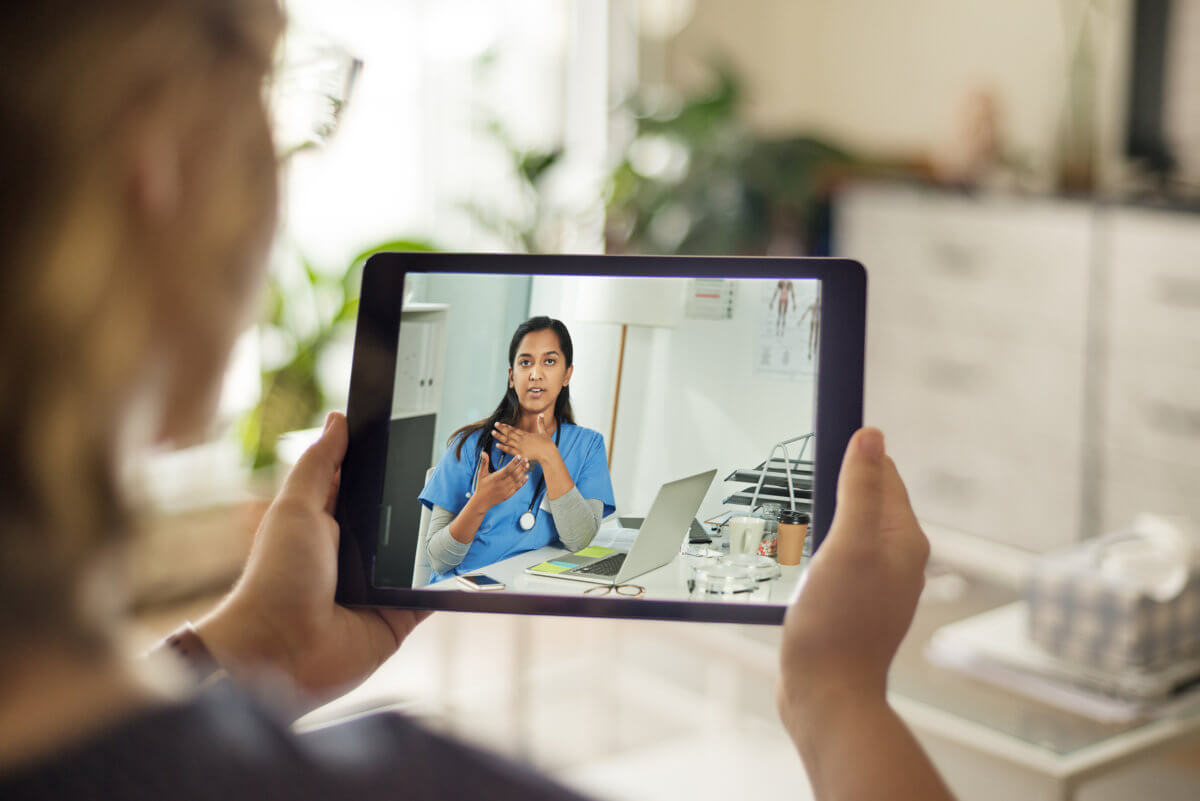Before COVID-19, Dr. Franziska Ringpfeil only sparingly arranged virtual appointments with her patients. Most lived in remote areas and had to pay out-of-pocket.
Now, with social distancing recommendations in place, Ringpfeil Advanced Dermatology, which has offices in Center City and Haverford, is seeing 95 percent of its patients through telehealth visits.
The only people who come in are those who absolutely need a physical exam, biopsy or urgent procedure.
Ringpfeil’s practice has been averaging about 200 virtual visits a week. It’s a fraction of the number they would normally see, but many specialists and primary care doctors have switched to telehealth to keep their heads above water.
The American Medical Association says remote care is especially important for the 100 million people in the nation who have chronic conditions, and the organization is strongly encouraging doctors to go virtual.
Medicare and many insurance companies have waived restrictions and have begun covering telehealth appointments.

Ringpfeil, who is also an associate professor of dermatology at Thomas Jefferson University, spoke to Metro about the ins and outs of telemedicine.
This interview has been edited for brevity and clarity.
How important is telehealth for practices like yours and for patients during this pandemic?
I think, first of all, it is hugely important for patients to be able to be screened for anything that’s concerning, for their rashes to be treated. Rashes don’t stop only because there’s a quarantine.
So, for somebody to have their psoriasis managed, their eczema managed, their rosacea, their acne managed, they’re hugely appreciative of that fact they can do this remotely without having to leave the house, without waiting in a waiting area, without the possibility of exposure to other patients and then possible exposure to COVID-19.
It is a very, very useful tool for patients. There are some areas where we’re not going to be able to help entirely through a telehealth visit. We might use telehealth as a triage to decide whether or not a patient might have to come to the office if it’s something really concerning.
How important is it for a practice? I think it is important to stay in business and not to just kind of throw in the towel. Who knows how long the crisis is going to last and how long the stay-home order needs to be in place in order to make a meaningful impact?
It certainly allows also for some cash flow, although it’s minimal compared to what we would normally be doing. But it allows for some cash flow into the practice, and it allows for the retaining of our employees and that’s all very important.
Do most insurances cover telehealth?
Yes, mostly. Most have come up with exception rules that span a period of about two or three months where they agreed to cover telehealth visits. They don’t do this without cost-sharing. There are some insurances that have no cost-sharing for the patients so basically they say they’re waiving the copays and coinsurances.
But most other insurances, including the government, do not waive those requirements. What they still say is the patient, if they had a copay of $15, the patient would still have a copay of $15.
Medicare has a 20 percent coinsurance and most of our patients who have Medicare might have a secondary insurance that picks that up. It’s similar to how it was before.
There’s no uniform rule, and private payers, meaning all those insurances that are not government, not Medicare, do not have to follow the government guidelines.
What would you say to patients who are concerned about or skeptical of a virtual appointment?
I think, in general, if you don’t know your physician and it’s a new patient who’s a little apprehensive about that, I think I understand the worry because it’s the same as if you’re going to a physician for the first time.
With video, it makes it even more difficult because you see the person but you don’t see the person fully. You cannot appreciate the office fully. You cannot appreciate, let’s say, the cleanliness of the office.
I do understand a degree of apprehension, and there are scenarios that cannot be entirely diagnosed and/or treated with a telehealth visit.
Do you think the coronavirus outbreak will change the way we look at telehealth in the future?
It might. I think people will come to appreciate that, in fact, you really no longer have to sit in a waiting room, that you no longer have to travel to an office if it’s not absolutely necessary. Obviously, it does not make up for procedures, which are normally a huge part for a dermatology office as well. There’s no avoiding coming to an office when a procedure is necessary.
I think the exemptions that are in place currently—seeking help across (state) borders and some other leniencies that were put in place in order to make telehealth feasible—I think they will be removed.
Maybe they are going to extend it a little bit if the COVID-19 crisis lasts longer and the mandate to stay home lasts longer, but, ultimately, I think a lot of those exemptions are going to disappear.
































